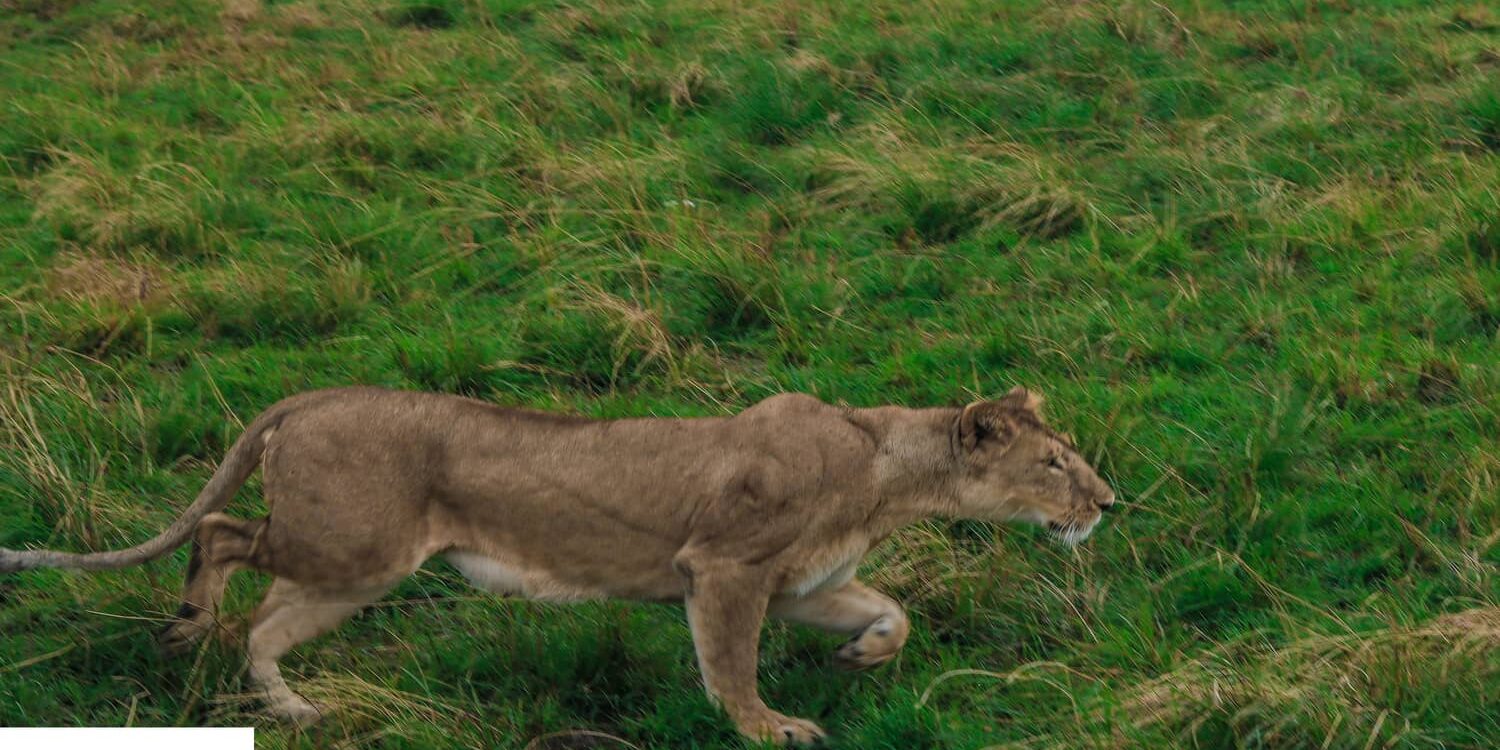MAASAI MARA NATIONAL RESERVE
Also known as The Mara, this famous national reserve lies in the Maasai land in Southwestern Kenya and borders the great Serengeti National Park in Tanzania to the south.
It is located 257kilometres from Nairobi, the capital city of Kenya. You will take approximately 6 hours to drive over good roads to reach The Mara or 45 minutes by air. If traveling by road, you may stop at the Mau Escarpment viewpoint, which offers a wowing view of the Great Rift Valley.
Around June every year, the wild action gets intense as hundreds of visitors flock to The Mara to witness the great wildebeest migration regarded by many as the World’s eighth wonder.
The County of Narok runs the Mara National Reserve in collaboration with the local community. It is an exceptional case study of local management of community resources. In addition, there are some private conservancies inside the Mara run by non-profits, with most of the proceeds going to community upkeep and conservation projects.
Let’s see what Maasai Mara has for us!
Vegetation and Landscape in Maasai Mara National Reserve
A more significant portion of the Mara is covered by the magical savanna grassland that stretches beyond what the eyes can see, providing ample feeding ground for thousands of grazers and the perfect camouflage for the ever-lurking, hungry predators.
Maasai Mara also features many rivers-Mara River is the largest of them all. It originates from the Mau Escarpment, snaking through the reserve and finally flowing into Lake Victoria. This freshwater source keeps the Reserve green and is primarily considered the lifeline to the Mara ecosystem. Even in the dry season, the Mara River remains a steady watering point for the animals.
Why you should visit the Maasai Mara Reserve
There are many compelling reasons you should ensure to check the enchanting Masai Mara off your bucket list! Well, it’s not just home to the annual spectacular wildebeest migration. You are almost always guaranteed to see the Big Five (the Lion, Leopard, Cheetah, Elephant, Buffalo) when you visit and experience the Masai people’s way of life. Moreover, the money you spend on park fees goes back to community conservation efforts.
Lions
A pride of lions is one thing you will not miss if you visit Maasai Mara. A pride has 6 to 20 lions, both male and female; males are responsible for leading the pride and marking the territories while the females take the lead in hunting, occasionally calling on their males to take down larger prey. The Mara vegetation and climate are adapted to nurture lions and other species in the cat family. Unlike leopards, lions are known to be sociable and almost showy-never afraid of human attention or the click of cameras as visitors come to within meters of the King of The Jungle.
Elephants
The World’s largest land animals weighing up to 6 tons, the African elephants are prevalent in this reserve. Males will often be spotted grazing alone while females (cows) and calves graze in herds. Poachers decimated huge elephant populations in the 1990s, but thanks to heightened conservation efforts and legal measures, The Mara’s elephant population has seen a steady increase.
Wildebeest and the Great Migration
Wildebeest (the African antelope) are slightly bigger than your typical antelope. Wildebeests have a mane around their neck and are very common in Maasai Mara. However, the wildebeest are not available throughout the year; they juggle between the Maasai Mara and Serengeti for feeding and breeding. Around July-October every year, the animals (wildebeest, elands, Great & Thompson gazelles zebras) arrive from Serengeti National Park in droves via the Mara Crossings.
It is calving season, and many young ones and weaklings do not make it across the river- they either drown or are made a meal by the Mara River crocodiles. This spectacular event dubbed the Great Migration has often been described as the 8th Wonder of the World- a testament of just how rhythmic nature may get when left uninterrupted.
Cheetahs and Leopards
The more agile, stealthier, and smaller cats can be spotted in the Maasai Mara. Cheetahs can be seen alone but mostly spotted in a group. With some luck and the scouting eye of an experienced guide, you may see at least three of the infamous Five Mara Brothers cheetahs as they hang out in the plains, probably after a sumptuous meal.
Researchers assert that there is an abundant leopard population in the Mara. However, leopards are pretty shy, known to be lone hunters in the night. Therefore, sighting them during the day is not easy.
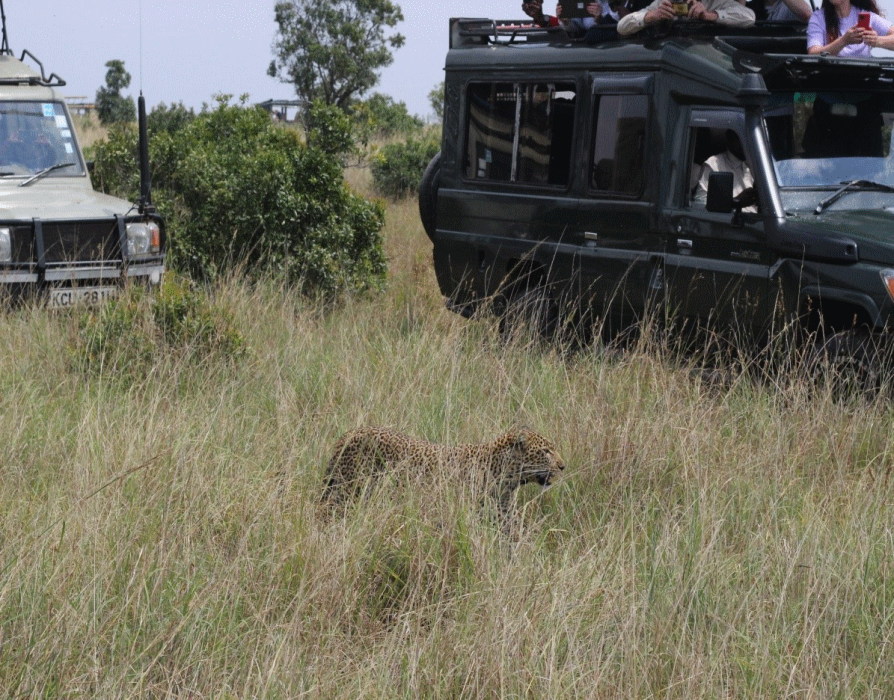
You can smell literary smell the excitement upon sighting the elusive African leopard. Experienced guides will take you to the right spots. They prefer to live in wooded savannahs-perfect for camouflage and rocky outcrops- vantage points to locate prey; however, there’s also an excellent chance you’ll spot one perched up in a tree
Leopards are aggressive hunters with a palette for antelope meat. Adult leopards prefer a solitary life and only mingle during mating. They prefer to live in wooded savannahs-perfect for camouflage and rocky outcrops- vantage points to locate prey; however, there’s also an excellent chance you’ll spot one perched up in a tree. Their vision, hearing, and sense of smell are highly developed to help them locate and pounce on their prey.
Other Animals
The vast reserve is home to tens of other species of animals, birds, and insects, which together form complex symbiotic relationships that are often featured in Animal Planet and National Geographic. At the Mara, it is guaranteed to see zebras, giraffes, monkeys, ostrich, a wide variety of birds, crocodiles and hippos, hyenas, antelopes, and more.
Maasai Cultural Experience
Despite modern-day pressure on our ecosystems, the Masai people-who have lived here for centuries still find a way to coexist with wildlife-thanks for prudent management of this resource and numerous conservation projects. With some arrangements, your driver/guide will facilitate a visit to a Masai Cultural village.
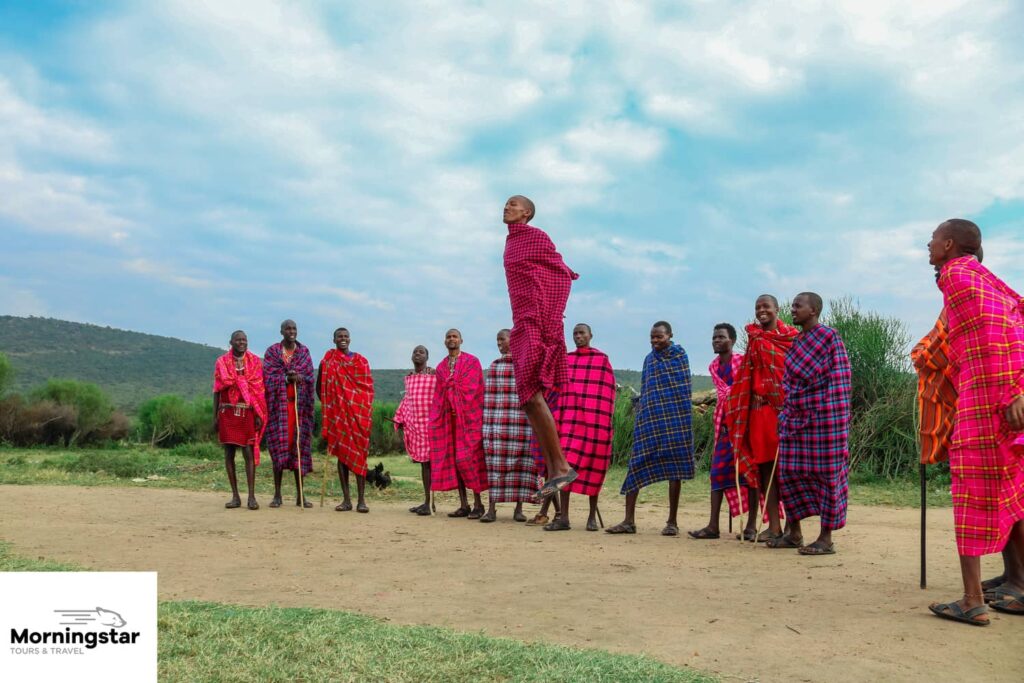
A young Masai Moran takes to the skies in front of guests visiting their cultural village
You will enjoy their history, experience their way of life, and jungle survival skills like lighting fire using the friction method, get opera-grade Masai dance & warrior dance. In addition, with as low as 10 dollars, you can buy skillfully hand-crafted souvenirs like bracelets, key holders, leather belts, and necklaces to mark the beautiful memories while here.
Where to stay
There are many camps, hotels, and lodges in Maasai Mara, ranging from budget level to royal luxury.
Luxury hotels & lodges
To get the most out of this fantastic jungle, we would recommend at least a minimum of 2-days at the Mara; ideally, one being a full-day safari where you get to sample packed lunch out in the African savannah! While the reserve has strict rules, conservancies inside the park can offer more personalized, intimate experiences like guided safari walk on foot or horseback. A local Masaai guide may even teach some basic animal tracking skills!
Budget Hotels and Lodges
Are you traveling on a budget? Luckily, The Mara has numerous facilities catering to budget travel. Here are some of our favorites, and by any means, it’s not an exhaustive list!
Miti Mingi Tented Camp: This is an eco-camp based outside the Ololaimutiea Gate of the Maasai Mara Reserve. Miti Mingi is a Swahili word for a place with many trees, which is the perfect description of the camp’s location-under, a canopy of ancient indigenous trees. Bird-watchers will love the abundant birdlife and their melodious morning songs.
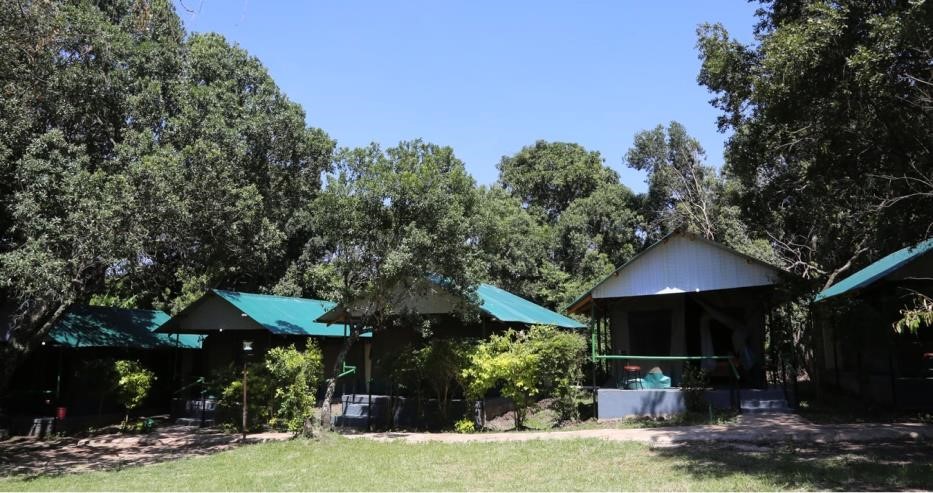
Miti Mingi Camp under a canopy of indigenous trees
The camp offers clean accommodation in tented self-contained permanent camps and meals for clients spending the night. A diesel generator powers the camp; lights are switched off at 10 p.m., so make a note to charge your devices!
Mara Topi Safari Lodge: The lodge is located 1.5km from the Ololaimutiea Gate and just a few kilometers near an air-balloon safari provider. The lodge features 15 cottages that go as low as 80 dollars off-peak and 120 dollars during the high season on full-board. Guests can book single, double, twin, and triple rooms, all ensuite with clean bathrooms & hot showers.
Mid-Range Hotels and Lodges
Here, a pick of some of the lodges our past guests loved:
Enkorok Lodge: Named after the Maasai community, Enkorok lodge is based at the heart of the Mara reserve. How about spending the night inside the reserve? With the lion roars and elephant trumpeting? Safe and therapeutic, right! They offer accommodation in a tented camp, with fabulous meals.
Mara Chui Resort: This resort is located near the Ololaimutiea gate overlooking the Ololaimutiea Hills and is beautifully designed to blend your stay in the wild with a taste of class. The resort is a mid-range category that is affordable to meet you at the budget level.
Jambo Mara Lodge: The Jambo Mara is located inside the Maasai Mara Reserve near the Keekorok airstrip; this makes it accessible by air and 30 minutes drive to the Sekenani Gate. The lodge is luxurious yet affordable.
Super Luxurious Hotels
Are you looking for a place worth all your money, world-class service, and perfect luxury? These are some of the places worth checking out.
Mahali Mzuri Lodge: Mahali Mzuri is a Swahili word for “the great place,” The lodge was deservedly voted the #1 Hotel in the World in the Travel + Leisure Awards 2021! It is found in the heart of the majestic Maasai Mara inside the privately-owned Olare Mutogori Conservancy; here, the great migration unfolds right before your eyes.
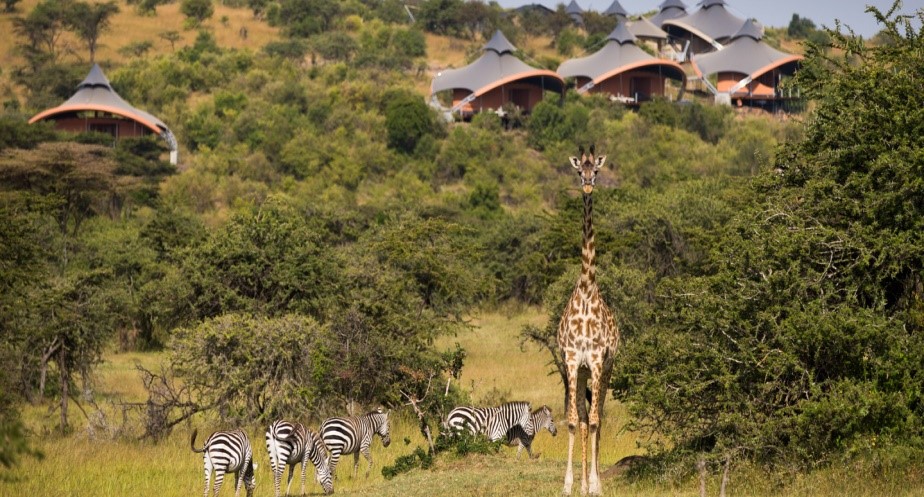
A herd of Zebras graze in full view from across Mahali Mzuri lodges, as curious giraffe looks on.
Owned by Virgin Group billionaire Sir Richard Branson, the lodge is the epitome of luxury in the wild, featuring a host of modern luxuries like a lunge with iPod docking stations, hi-speed Wi-Fi, and a luxury swimming pool. Prices begin at $945 per person per night, and the level of service is worth every dollar.
Olare Mara Kempiski Lodge
Located inside their own conservancy Olare Mara Kempiski offers bush dinners, accommodation in cozy tents, a shaded swimming pool, and scenic views from inside your tent. The lodge is worth it as they offer the best services for both extended stays and staycations.
When to visit
The best time to visit is beginning June through October every year. This season is termed the high season and is an opportune time to catch the wildebeest migration. In addition, it is also the rainy season, and the reserve is lush green, with increased animal activity like grazing, calving and mating, and hunting for the predators.
Despite the reserve being very busy and flocked with tourists, there is a space for everyone to sight the animals, catch beautiful views, cozy accommodation, world-class Kenyan hospitality, and so much more.
The flipside to the high season, – well, -higher costs for hotels and services. However, should you choose to plan your safari off-season, you will still be able to witness great activity around the year!
Maasai Mara has so much to offer, and it would be worthwhile to include it on your travel list. At Morningstar Safaris, we deeply understand the connection between holiday travel and body wellness, and we will go out of our way to ensure you receive the ultimate safari experience.
#MasaiMara #Budgettours #luxurytours #Thebig5 #Mahalimzuri #morningstarsafaris #


